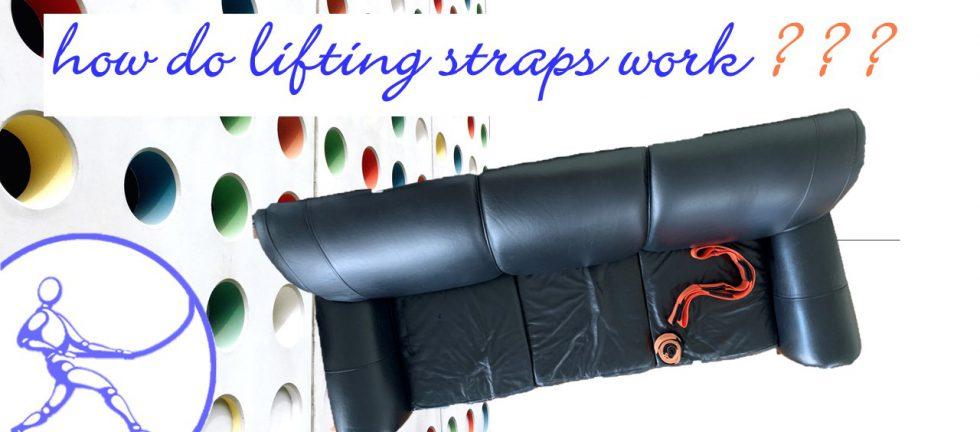Have you ever wondered how lifting straps work? Before I hired movers, I had never seen lifting straps in use, but when I did see them, I was incredibly impressed. The straps acted almost as an extension of the movers’ arms, much like the driver of an excavator operates the bucket.
I’ve since purchased lifting straps (aka moving straps) from the hardware store, and we use them whenever we have something really big and awkward to lift and move, especially if hills or stairs are involved. A few years ago, my sister and I carried a heavy sofa-bed from a cargo trailer parked frustratingly far from the house, down the ramp, over the sidewalk and curbs, and up the stairs to my daughter’s student housing. (My daughter was the planner, scout and navigator.) The guys who had loaded the sofabed into the trailer didn’t think we’d be able to unload it on our own. In hindsight, we were sure that we wouldn’t have been able to do it without those straps.
Here’s how lifting straps work for a 2-person lift:
- Each person feeds the straps under the end of the object. The strap needs to be secure – with a sofabed, the straps went behind the legs, so they couldn’t slide off. With a legless or odd-shaped object, you would criss-cross the straps so each partner has one end of each strap.
- All of the usual 2-person lifting rules apply – plan your path, communicate clearly, etc.
- The idea is to place the hands against the object to stabilize it – not to grip it. We adjusted the strap’s length so our hands were pushing against the end of the sofa. The strap itself sits on the forearm, as close to the elbow as possible.
- When you lift, the weight of the object pulls on your arm, not your fingers. This “bypasses” the grip, allowing you to lift more weight than your hands could grip, especially when the grip is awkward. The straps also allow you to use a more upright posture – you don’t have to have your hands on the bottom of the sofa, or on the outside edges. In this way, the back demands are also improved.
Lifting straps can also be used for 1-person lifts, in some situations; I watched our movers use them to carry several file boxes on their backs, down stairs! Their straps didn’t have loops for the forearms; they simply snaked the ends of the strap around their forearms, expertly adjusting the distance between the arms for the item they were transporting. As an ergonomist, I’m not sure that I could endorse their methods, but I was certainly intrigued by them!
Lifting straps take practice to use, and they should not replace other mechanical aids. If you can transport a heavy object with a cart, that’s still a much better option! But they do have some advantages with bulky, awkward, heavy items over rough terrain.
Curious about whether a device or technique actually reduces biomechanical loads? Ask us for an objective comparison!
Want to train employees to use lifting straps? We can help you develop task-specific employee training.


